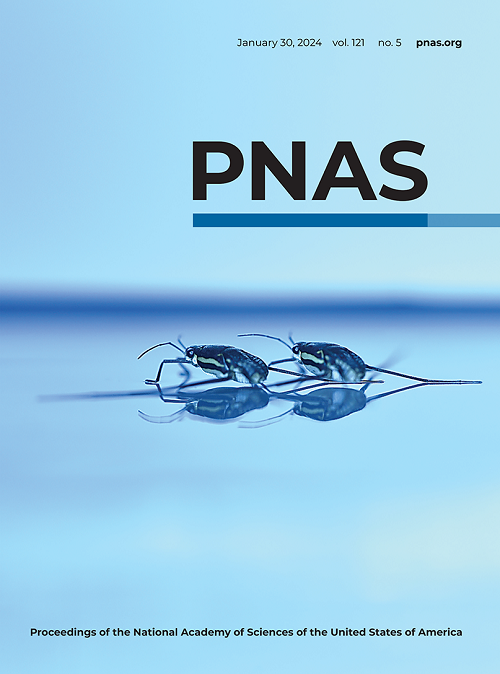UFMylation: A supervisor of the HIF1α pathway and a potential therapeutic target for anti-PD-1 combination therapy in hypoxic tumors
IF 9.4
1区 综合性期刊
Q1 MULTIDISCIPLINARY SCIENCES
Proceedings of the National Academy of Sciences of the United States of America
Pub Date : 2025-07-02
DOI:10.1073/pnas.2500562122
引用次数: 0
Abstract
Activation of hypoxia signaling has been identified as an innate resistance signature against anti-PD-1 therapy, suggesting its potential as a target for combination treatments. Here, we demonstrate that UFMylation modification of HIF1α stabilizes the protein by antagonizing its ubiquitination and proteasomal degradation under hypoxic conditions. Mechanistically, depletion ofUFMylation: HIF1α通路的调控因子和抗pd -1联合治疗缺氧肿瘤的潜在治疗靶点
缺氧信号的激活已被确定为抗pd -1治疗的先天抗性信号,这表明它有可能成为联合治疗的靶点。在这里,我们证明了ufmyation修饰HIF1α通过对抗其泛素化和在缺氧条件下的蛋白酶体降解来稳定蛋白质。从机制上讲,UFL1的缺失或缺陷的UFMylation会增加HIF1α与p53的结合,促进其降解。在体外和异种移植小鼠模型中,UFL1或UBA5的缺失,或HIF1α的ufmyation缺陷,会破坏HIF1α的稳定,显著抑制肿瘤的生长和发育。在异种移植模型中,HIF1α的缺陷UFMylation增强了抗pd -1治疗的应答。临床上,UBA5在乳腺癌组织中表达上调,选择性UBA5抑制剂降低ufmyation活性和HIF1α蛋白水平,从而增强抗pd -1联合治疗小鼠肿瘤模型。我们的研究结果强调ufmyation是HIF1α途径的关键翻译后修饰,也是缺氧肿瘤的一个有希望的治疗靶点。
本文章由计算机程序翻译,如有差异,请以英文原文为准。
求助全文
约1分钟内获得全文
求助全文
来源期刊
CiteScore
19.00
自引率
0.90%
发文量
3575
审稿时长
2.5 months
期刊介绍:
The Proceedings of the National Academy of Sciences (PNAS), a peer-reviewed journal of the National Academy of Sciences (NAS), serves as an authoritative source for high-impact, original research across the biological, physical, and social sciences. With a global scope, the journal welcomes submissions from researchers worldwide, making it an inclusive platform for advancing scientific knowledge.

 求助内容:
求助内容: 应助结果提醒方式:
应助结果提醒方式:


